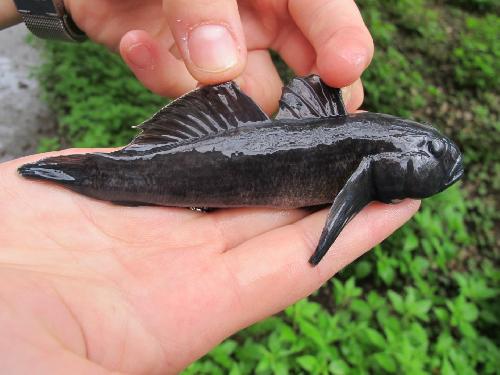Conventional methods of stock monitoring are unsuitable for certain fish species. For example, the infestation of an area with invasive Ponto-Caspian gobies cannot be identified in time by standard methods. Researchers at the University of Basel have developed a simple, effective and cost-efficient test for these introduced non-native fish, they report in the magazine PLOS ONE.
Gobies from the Black and Caspian Sea are spreading along the shipping routes in Central Europe and North America. They have been present in the Swiss part of the Rhine for about four years and already dominate the bottom of the stream in the region of Basel. So far, they have not advanced further than the water power plant in Rheinfelden, but a continuing expansion seems inevitable.
Current methods of fish monitoring are not suited to adequately measure the spreading of Ponto-Caspian gobies as they are labor-intensive and not sufficiently sensitive. Accordingly, infestations of an area with gobies are often only discovered when they have reached high densities and efforts of containment remain futile. Researchers of the Department of Environmental Sciences of the University of Basel have now developed a test that allows for the detection of Ponto-Caspian gobies in streaming and stagnant water.
 Ponto-Caspian goby (Neogobius melanostomus) Credit: University of Basel, Department of Environmental Sciences
Ponto-Caspian goby (Neogobius melanostomus) Credit: University of Basel, Department of Environmental Sciences
Measuring the environmental DNA
With a commercially available, though slightly modified, water column sampler, water samples are taken from the bottom of the water body, where invasive gobies live. Via feces or scales, the fish release so-called environmental DNA into the stream. The water samples are then analyzed for traces of this so-called eDNA in the lab. The test developed at the University of Basel reacts exclusively to the genetic material of Ponto-Caspian gobies, but not to domestic fish species.
The procedure is less time and cost-intensive than angling, and the samples can even be drawn by untrained individuals. Unlike electrofishing, the method does not impact the fish fauna and can consequently be used in protected zones and breeding grounds.
First test for lotic water
Five species of invasive gobies populate wide areas of freshwater and brackish waters in Central Europe -- the species that is most common to the region around Basel, Neogobius melanostomus, even figures among the 100 worst invaders in Europe. "Our test is one of the first approaches that targets a specific fish species and detects it successfully in flowing freshwater" says the study's lead author, Dr. Irene Adrian-Kalchhauser. "We hope that our work contributes to establishing eDNA as a standard method in European water resource management. Similar tests have been used for a few years to track the expansion of the Asian carp in the United States."
source: University of Basel